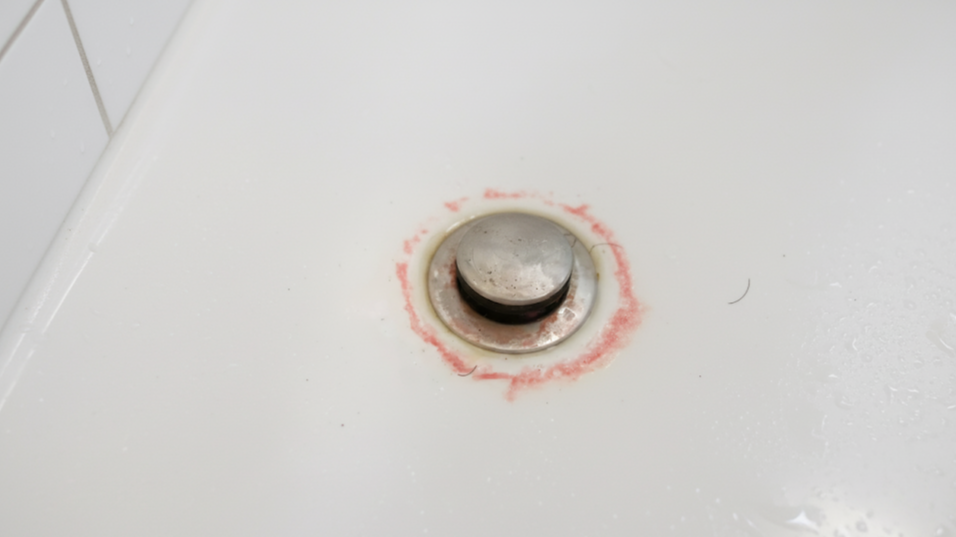What Is the Red Stuff in Your Shower?
What Is the Red Stuff in Your Shower?
If you’ve noticed a reddish-pink or orange film in your shower, you’re likely dealing with Serratia marcescens, a common airborne bacterium often misnamed “pink mold” or “pink slime.” This slimy residue thrives in warm, moist bathrooms, appearing on shower tiles, grout, drains, curtains, or faucets. While usually harmless, it’s unsightly and can pose minor health risks for some. This guide explains what the red stuff is, how to clean it effectively with eco-friendly methods, and how to prevent it, ensuring a hygienic, sustainable bathroom.
What Is Serratia Marcescens?
Serratia marcescens is a bacteria, not a true mold, that produces a reddish-pink pigment called prodigiosin, giving it a distinctive color. It feeds on soap residue, shampoo, dead skin cells, and minerals from hard water, making showers an ideal breeding ground. It’s common in bathrooms and usually harmless to healthy people but can trigger allergies or asthma in sensitive individuals or, rarely, cause infections in those with weakened immune systems. Unlike toxic black mold, it’s primarily a cosmetic and hygiene issue.
How to Identify It
Appearance: Slimy, pinkish-red or orange film, often in rings around drains, on grout, or shower curtains. It feels sticky or greasy.
Location: Common in showers, tubs, toilet bowls, or sink rims where moisture lingers.
Smell: Mild musty odor, less pungent than mold.
Test: If it wipes off easily with a cloth and doesn’t return quickly after cleaning, it’s likely bacteria. Persistent dark growth might be mold—use a mold test kit if unsure.
How to Clean the Red Stuff
To remove Serratia marcescens, focus on killing the bacteria and drying the area, using non-toxic methods for a sustainable bathroom:
Vinegar Solution: Mix equal parts white vinegar and water in a spray bottle. Spray affected areas, let sit for 15–30 minutes, scrub with a soft brush or sponge, rinse, and dry thoroughly. Vinegar kills bacteria naturally.
Baking Soda Scrub: Sprinkle baking soda on the area, spray with vinegar to fizz, scrub, rinse, and dry. This breaks down slimy residue effectively.
Hydrogen Peroxide: For stubborn spots, spray 3% hydrogen peroxide, let sit for 10 minutes, scrub, rinse, and dry. It’s a gentle, eco-friendly disinfectant.
Bleach (Last Resort): For severe cases, mix 1 tablespoon bleach with 1 gallon of water, spray, let sit for 10 minutes, scrub, rinse well, and ventilate. Avoid if you have sensitive skin or prefer non-toxic options.
Dry Thoroughly: After cleaning, squeegee shower walls and dry surfaces with a towel to prevent regrowth.
Repeat cleaning weekly until the bacteria is gone, then maintain monthly to keep your shower hygienic.
How to Prevent the Red Stuff
Preventing Serratia marcescens requires reducing moisture and removing its food sources:
Ventilate: Run a smart exhaust fan during and after showers for 20–30 minutes to lower humidity.
Dry Surfaces: Wipe down shower walls, curtains, and drains after use to limit moisture.
Clean Regularly: Use a vinegar-water solution weekly to remove soap scum and residue.
Replace Shower Curtains: Swap plastic liners every 6–12 months if pink slime persists, or use a machine-washable organic cotton curtain.
Address Hard Water: Install a shower filter to reduce minerals that feed bacteria.
Use a Hair Catcher: Prevent hair buildup, which traps residue, with a budget hair catcher.
Keep Your Shower Clean and Hygienic
The red stuff in your shower, likely Serratia marcescens, is a manageable issue with proper cleaning and prevention. By using eco-friendly solutions like vinegar and maintaining a dry, ventilated bathroom, you can eliminate this bacteria and keep your space sparkling. If the red stuff persists or spreads, consult a professional to check for plumbing issues. A clean shower enhances your bathroom’s hygiene and sustainability, creating a fresh, inviting routine.
